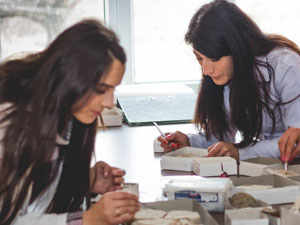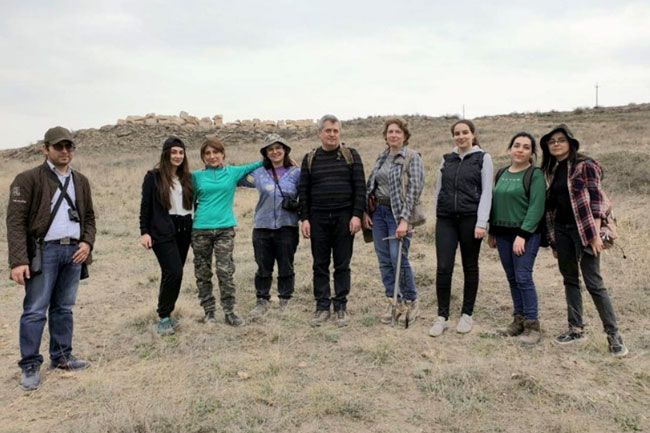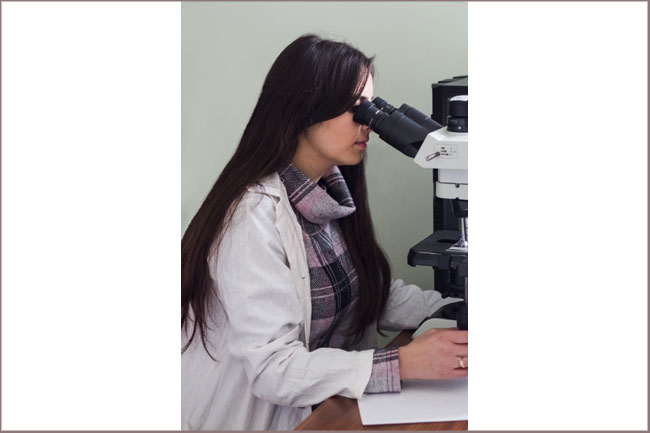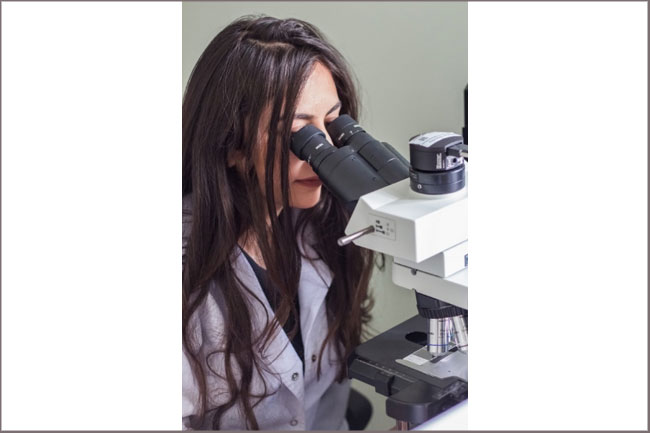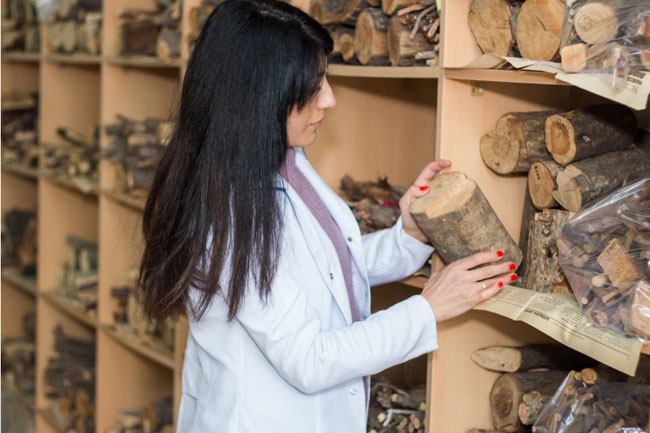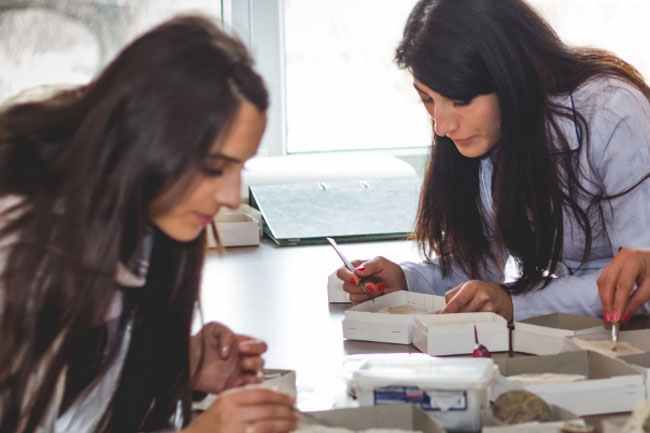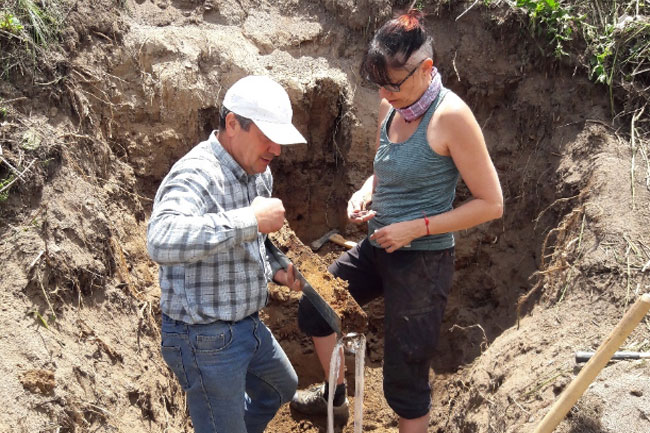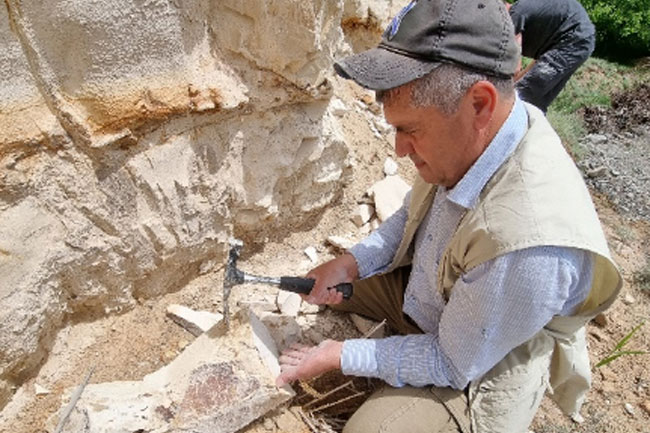| ||||||||
Researchers of the Department of Palaeobotany of the Institute of Botany after Armen Takhtajyan of NAS RA have described a number of fossil plant species new to science.
In the framework of paleobotanical studies, researchers of the Institute of Botany have found about 300 taxa of fossil plants from the sedimentary layers containing Early Pleistocene flora of the Vorotan River basin and Pliocene flora of Hortun on the Ararat-Vayots Dzor border.
In the locality of Ararat travertines Ivan Gabrielyan, the head of the Department of Paleobotany, doctor of biological sciences, and Astghik Papikyan, a researcher, candidate of biological sciences, have described about 120 species for the first time in the world paleoflora, about 15 new genera (Aulacomnium Schwagr., Brassaiopsis Decne. & Planch. etc.), and about 200 new species for the first time in the paleoflora of Armenia and Artsakh. It has been revealed that modern equivalent species of about 50 taxa do not grow today in the territory of the Republic of Armenia.
Narine Hayrapetyan, a junior researcher, a postgraduate student of distance learning, at the moment of studying fossil pollen Dr. Ivan Gabrielyan mentioned that all families have been represented in the modern flora of Armenia, except for Eucommiaceae and 15 genera. They are: Tsuga, Alnus, Brassaiopsis, Eleutherococcus, Eucommia, Ostrya, Parrotia, Pterocarya, etc. He noted that more than a hundred new taxa for the RA fossil flora have also been discovered based on fossil pollen and other plant microremains.
Elen Hakobyan, a junior researcher, at the moment of studying samples from the Tsovinar-1 site He also mentioned that the comparison of Early Pleistocene and modern climate conditions has revealed that the current climatic parameters of the average currents of Vorotan basin correspond to the coldest and relatively humid annual average parameters of the Early Pleistocene paleoclimate which has been revealed by the fossil vegetation of the Sisian diatomite strata. The implemented works reveal the parameters of past climate fluctuations and help to predict future climate changes.
Astghik Papikyan, a researcher,a candidate of biological sciences, in the wood collection room The research was carried out within the framework of the basic funding of the Institute.
Young researchers at the moment of working The results of the studies were published and continue to be published in journals belonging to the international Springer series.
Currently, under the leadership of Ivan Gabrielyan, the scientific group of the Institute, jointly with the University of Lille in France, is conducting a study of the Paleozoic flora of the RA territory.
Ivan Gabrielyan, the head of the Department of Palaeobotany of the Institute, DSc(biol.) and Angela Bruch, a researcher of Senkenberg Museum of Paleobotany, DSc(biol.) at the Holoocenian Tsovinar-1 site Astghik Papikyan, Narine Hayrapetyan, Elen Hakobyan, Sirush Khachatryan, the young researchers of the Palaeobotany Department of the Institute, who have received professional skills in Germany, France and Italy, as well as volunteers from Armenia and abroad, have participated in the research.
At the Early Pleistocene Shamb-1 site Fossil samples are exhibited in the Museum of the Institute of Botany and contribute to eco-education. |
General Page - About Academy - Divisions - Organizations - Members - Contact us - Structure - Presidium Members
Documents - Innovation Proposals - Publications - Funds - Conferences - Competitions - International cooperation
Youth programs - Photogallery - Videogallery - Web Resources Other Academies - "Gitutyun" newspaper - "In the World of Science" Journal
Publications in Press - Notices - Anniversaries - Universities - News - Scientific Results - Diaspora Department presents
Young Scientist Tribune - Our Honored Figures - Announcements - Sitemap - COVID-19 - Search
